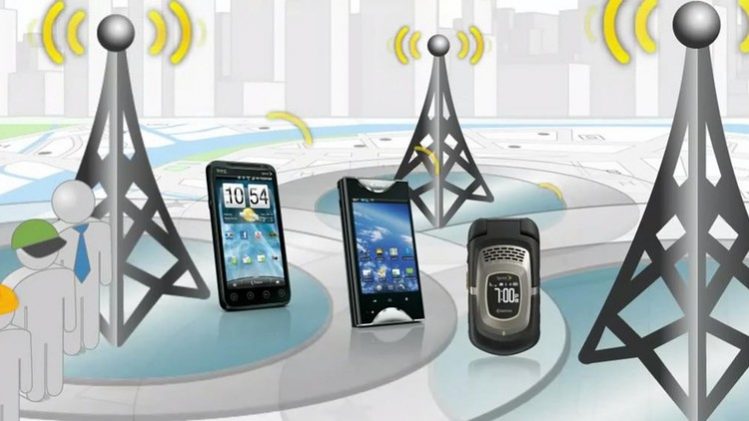
Test your Knowledge Level in Wireless Communications Field
You will get two Practice Tests that enable you to examine your Knowledge in the Wireless Communications Field
===============
Note that the exam is prepared based on the material presented in the course titled “Wireless Communications: From Basics to Advanced“, which can be accessed from our main page on Udemy.
===============
Wireless Communication Principles – Basics to Advanced.
If you want to prepare yourself to work in companies like NOKIA, HUAWEI, SAMSUNG, APPLE, GOOGLE, FACEBOOK, MICROSOFT, ERICSSON, QUALCOMM, INTEL, ZTE, etc. Then, this course is for you.
Introduction to wireless communication covers IMPORTANT topics related to transceiver structure and wireless medium characteristics including path loss and shadowing, statistical multi-path channel models, the capacity of wireless channels, digital modulation techniques and their performance analyses in the wireless medium, diversity methods, coding techniques, multicarrier systems (OFDM), multiple antennas (MIMO) and Spatio-temporal analysis, multi carrier-based modulation, spread spectrum analysis, multi-user systems, cellular systems, and wireless networks.
More specifically, the covered topics in the test are listed as follows:
- L0 – The course content (main topics) and some details about evaluation criteria
- L1 – P1 – Brief introduction to wireless communication and background
- L1 – P2 – Brief introduction to wireless communication and background
- L1 -P3 – Introduction to wireless mobile communication systems
- L2 – Wireless Propagation Characteristics: (Large scale / Path-loss & Shadowing Models)
- L3 – Wireless Propagation characteristics: shadowing, outage performance, & measurement vs statistical models
- L4 – Wireless Propagation Characteristics: (Multipath Narrow-Band Model)
- L5 – Wireless Propagation Characteristics: (Multipath Wide-Band Model, Time-varying Impulse Response & Delay-Doppler Model)
- L6 – Wireless Propagation Characteristics: Fading, Power Delay Profile & Doppler Power Spectrum Density
- L7: Capacity of Flat-Fading Channels
- L8: Capacity of Frequency Selective Fading Channels
- L9: Linear Modulation and Outage Probability over Fading Channels
- L10: Effect of Fading, Doppler, and Delay Spread on Average Outage Probability
- L11: Diversity in wireless communication: concept and techniques
- L12: Adaptive Modulation in wireless communication: concept and approaches
- L13: Multiple Input Multiple Output (MIMO) Systems
- L14: Techniques for Overcoming Interference in Wireless Systems: OFDM, WCDMA, Equalization, Multiuser Networks (multiple access and random access)
- L15: Spread spectrum and multi-user communication in wireless cellular systems
- L16 – OFDM in Details. Why should you know it? What is it? and What are its merits/advantages & demerits?
- L17 – OFDM Simulation Using Matlab Software: Full Tutorial
- L18: Wireless Channel Estimation
- L19: Multi-layer precoding for MIMO
- L20: Modelling Wireless Channels
- L21: Building a complete OFDM model that can send and receive real-time signals carrying IP packets
- L22: Build Advance NFM SCOPE Receiver with real-time Recorder GNU-RADIO Win10
- The Story of communication systems evolution from an information theory perspective
======== About the Examinar – The Exam Creator===========
Jehad M. HAMAMREH is the Founder and Director of WISLABi/com, Editor at Researcherstore/com & RS-OJICT journal, as well as A. Professor with Electrical and Computer Engineering Department, Antalya International (Bilim) University. He earned his Ph.D. degree in Telecommunication Engineering and Cyber-Systems from Medipol University. Previously, he worked as a Researcher at the Department of Electrical and Computer Engineering at Texas A&M University. He is the inventor of more than 20 Patents and has authored more than 90 peer-reviewed scientific papers along with several book chapters. His innovative patented works won the gold, silver, and bronze medals in numerous international invention contests and fairs.
His current research interests include Wireless Communication, Wireless Security, Wireless Sensing, O-RAN, 5G/6G, IoT, AI/ML, wireless physical and MAC layers security, orthogonal frequency-division multiplexing (OFDM), multiple-input multiple-output systems (MIMO), advanced waveforms design, multidimensional modulation techniques, and orthogonal/non-orthogonal multiple access schemes for future wireless systems. He is a regular investigator and a referee for various scientific journals as well as a TPC member for several international conferences. He is an Editor at RS-OJICT and Frontiers in Communications and Networks.
Key Research Topics: Wireless Communication, Wireless Security, Wireless Sensing, Open RAN, 5G/6G, IoT-AI






